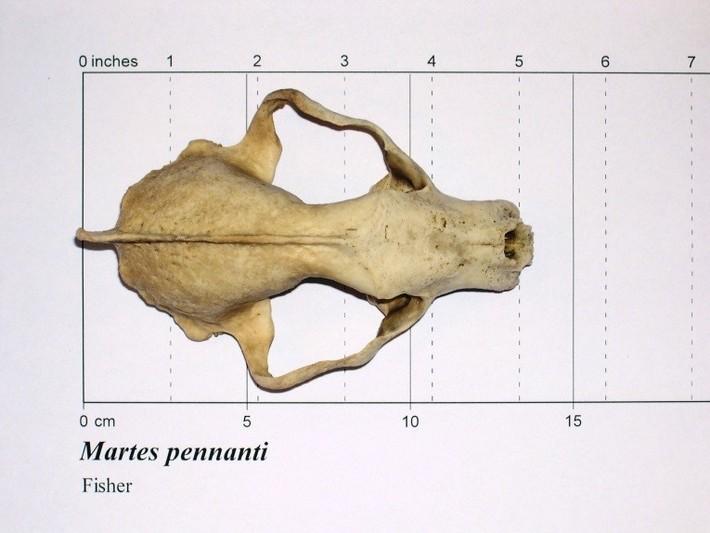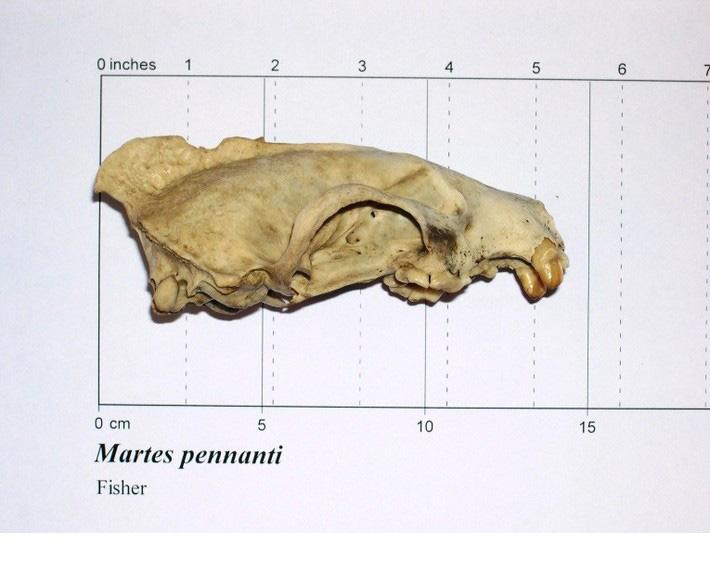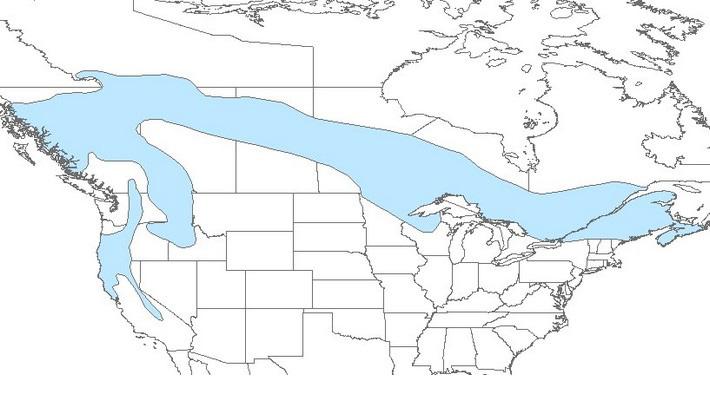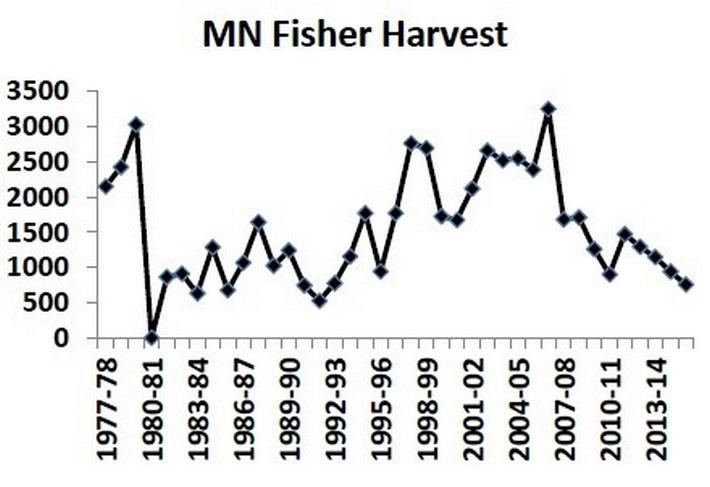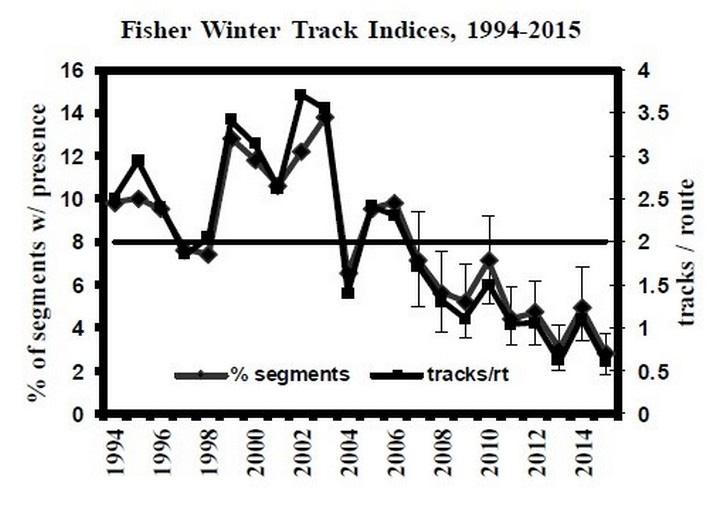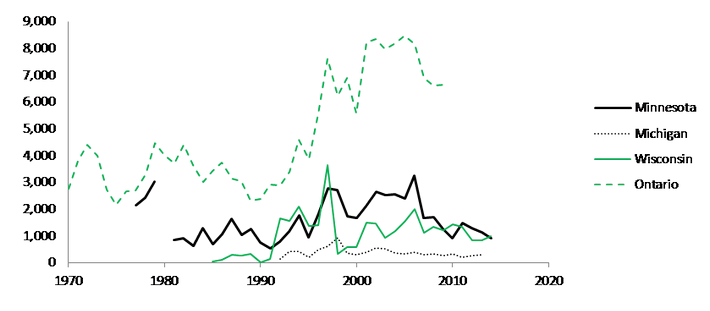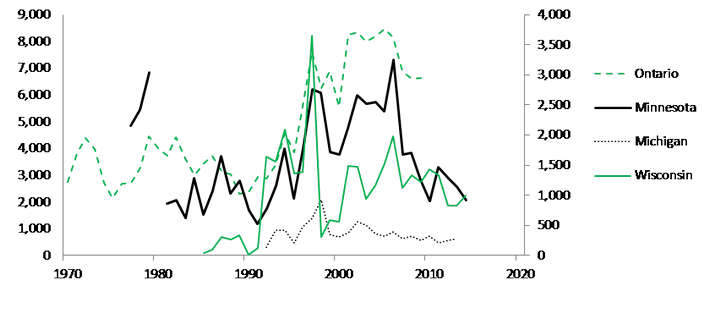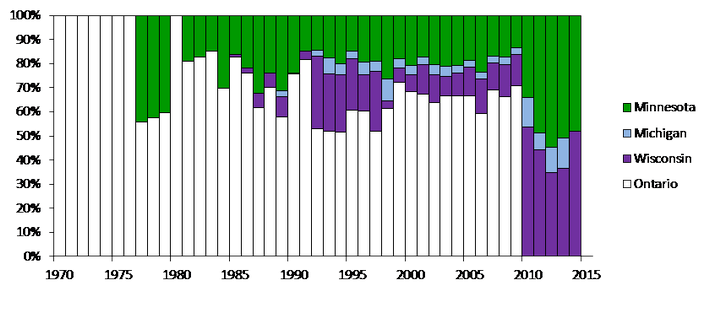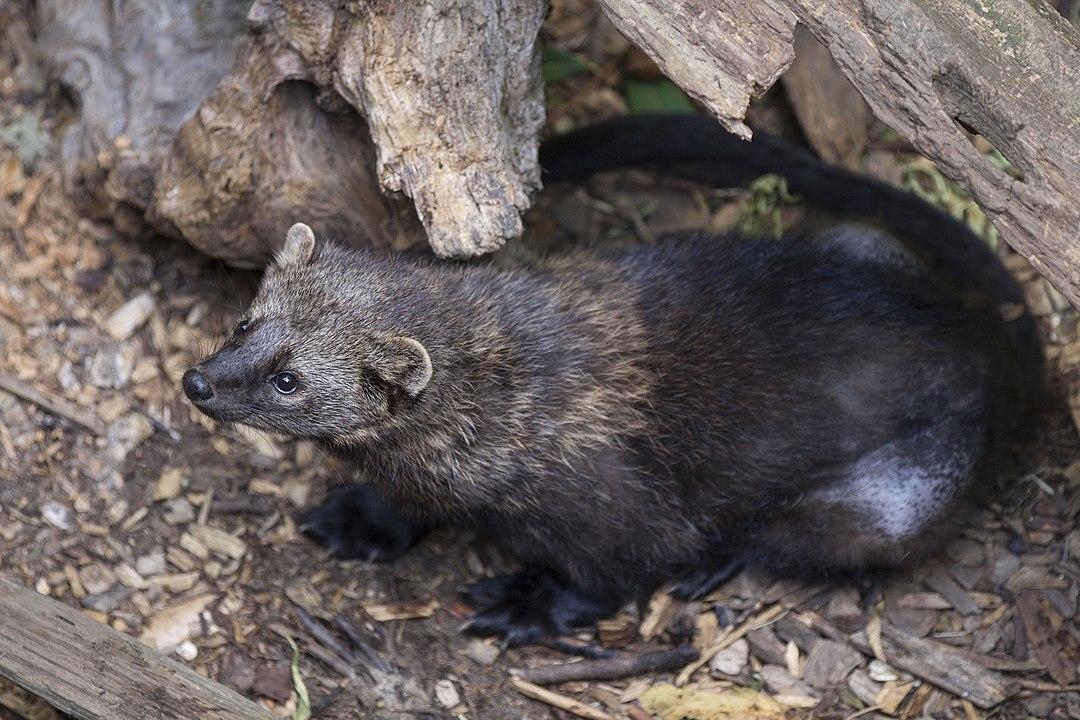
Description
Fishers are largely nocturnal, medium-sized carnivores in the weasel family (Mustelidae). The major identification challenge is distinguishing marten from fishers, as they are found in similar habitat in trees and on the ground, and both have thick fur and bushy tails. Marten are much smaller than fishers and have orange on their throat and chest, which fishers lack. In addition, marten ears and snout appear pointier than fishers.
Size
Measurements from Minnesota are from Hazard (1982), from Wisconsin are from Jackson (1961), and from the Eastern United States are from Hamilton and Whitaker (1998).
Total length ranged from 31.5” to 40.2” (800-1,020 mm) in Wisconsin.Male total length averaged 38.9” (987 mm) and ranged from 35.6” to 41.5” (905-1,055 mm) in Minnesota, while female total length ranged from 34.8” to 36.3” (884-921 mm) in Minnesota.Tail length averaged 14.2” (360 mm) in the Eastern United States, and ranged from 11.8” to 15.7” (300-400 mm) in Wisconsin.Male tail length averaged 14.6” (372 mm) in Minnesota and ranged from 13.4” to 15.6” (341-397 mm), while female total length ranged from 14.0” to 14.1” (355-359 mm) in Minnesota.Male body weight averaged 8.6 lb (3.9 kg) in Minnesota, ranged from 6.4 to 12.6 lb (2.9 to 5.7 kg) in Minnesota, ranged from 7.9 to 12.1 lb (3.6-5.5 kg) in Eastern U.S, and ranged from 7.1 to 13.0 lb(3.2-5.9 kg) in Wisconsin.Female body weight ranged from 4.6 to 4.9 lb (2.1 to 2.2 kg) in Minnesota, and ranged from 4.0 to 6.4 lb (1.8-2.9 kg) in Wisconsin.
Males are typically larger than females.
Distribution & Status
Fishers are found in forested regions in parts of southern Canada, Western U.S., and along the U.S.-Canada border in the east. Populations are secure or apparently secure in Ontario, Minnesota, Michigan, and Wisconsin, imperiled in North Dakota, and are presumed extirpated from Iowa.
Worldwide, Martes pennanti is restricted to northern North America. Other Martes species occur throughout Europe and Asia.
Marten have an IUCN rank of Least Concern, IUCN information
Incidence in Minnesota
Trapping for fisher and marten are jointly administered in Minnesota, typically allowed during a short period in late fall. In 2017, open season will be from November 25th through November 30th. Hunting and trapping are regulated by the Minnesota Department of Natural Resources, regulations here.
From the early 1980s until the mid-2000s, fisher harvest steadily increased in Minnesota. Harvest has steadily declined since the peak in the mid-2000s.
From winter track data (1994-2015) it appears that Minnesota fisher populations are stable or in slight decline (Erb 2015).
Population Trends
To help assess population trends, we can look at regional furbearer harvest data, methods.
In Ontario, harvest steadily increased from the early 1990s to the late 1990s, with stable harvest at these higher levels until present. In Minnesota, Michigan, and Wisconsin, harvest appears stable, with much year-to-year variation.
Ontario dominates regional harvest.
Life History
Fishers are opportunistic hunters who take a variety of prey, including mammals, birds, eggs, reptiles, amphibians, insects, fruits, and nuts. Snowshoe hares and porcupines are common prey. Fishers prefer structurally complex forest with adequate prey, and avoid openings that lack overhead cover (Chapman and Feldhamer, 1982). Dens are usually in bushes, hollow logs, snags, and trees. Males may not breed until 2 years old, but females breed at 1 year. Fishers mate in April, and 2-4 kits are born the following April after a long delayed implantation. Kits open their eyes and start crawling in week 8, start eating meat in week 9, start climbing in week 10, and disperse in early fall. Fishers are a rare prey for raptors and larger mammal carnivores.
Contacts with Humans
Fur-trapping can be a major source of mortality, as fisher fur is a valuable resource. Since fisher use forested habitat, they are uncommon near farms and are little threat to poultry. Loss of forested habitat from logging combined with fur-trapping harvest has decreased fisher abundance (De Vos, 1964; Laliberte and Ripple, 2004).
